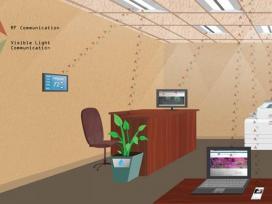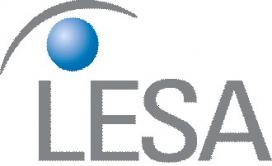Center Develops System to Use Light Transmission for High Bandwidth Data Transfer
The Center for Lighting Enabled Systems & Applications (LESA), an NSF-funded Engineering Research Center (ERC) headquartered at Rensselaer Polytechnic Institute (RPI), developed the world’s first high-speed visible-light transmission link (VLC) for high bandwidth data transfer with a microchip receiver. VLC uses LED light instead of RF signals for high-speed wireless communications.
This new technology—sometimes called “Li-Fi” as shorthand for “light fidelity”—offers the potential to provide virtually unlimited bandwidth spectrum as data-intensive Internet of Things (IoT) applications become ubiquitous. This advance can address the bottleneck in bandwidth that will arise as wireless applications eat up exponentially more data throughout society.
LEDs transmit data through modulation that is so fast and subtle that it is imperceptible to the human eye and does not interfere with the quality of illumination. Unlike Wi-Fi, Li-Fi wirelessly transmits data via electromagnetic waves in the visible instead of invisible RF electromagnetic range. The ERC’s researchers are investigating new types of light sensors and signal processing circuits that can solve for the problem of maintaining connectivity as smartphones, laptops, and other devices are moved about in a contained space covered by a Li-Fi system.
The team is creating arrays of photodetectors that can serve as multichannel receivers and light sensors to allow the tracking of light from one LED fixture to the next. The ERC is also working to enlarge the surface areas of the photodiode to capture more light, but without responding to other ambient light that produces ‘noise’ that can dramatically limit the speed of the communication channel.



